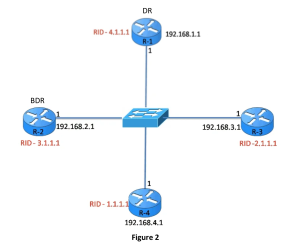What is OSPF Designated Router
In the previous lesson, we discussed the challenges of the OSPF Multi-access network. The two challenges are unwanted adjacencies and the flooding of LSAs. The solution is the Designated Router (DR). DRs are designated to coordinate topology updates. On multiaccess networks, at initialization, a Designated Router (DR) and a backup designated router (BDR) are elected. […]

